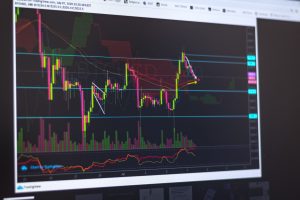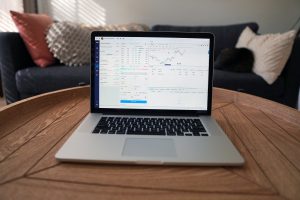Forex technical traders have a wide range of technical trading strategies to choose from to trade positions and make profits. One of the strategies with increasing popularity is range trading. The strategy is not familiar to some traders, especially those new in the currency market, but it is not too foreign to skilled traders.
What Is Range Trading?
Range trading strategy helps to identify the market support and resistance areas or overbought and oversold currency. It takes place when price trades between a consistently high and a consistently low price for a period of time. The top of the trading range indicates price resistance, while the bottom of the range indicates price support.
Forex traders can implement a trading range strategy at any time during their trading period. If there is a lack of accounting for a directional market bias during a trending market, range trading becomes extremely weak. However, the strategy is more effective when the currency market does not show any evident long-term trend or does not display any feasible direction.
Types of Ranges
Several ranges make up the range trading strategy, and below are a few of the most popular ones.
1. Rectangular Range
A rectangular range shows horizontal and sideways price movements between an upper resistance and lower support. The range has a shorter time frame, making it highly possible to achieve faster trade opportunities. It also helps to provide a clear indication of a consolidation period. The downside is that the range is misleading to traders who do not use long-term patterns.
2. Diagonal Range
Diagonal ranges or price channels are chart patterns on a sloping trend channel that show the ascending or descending price. The channels range from broadening, narrowing, or rectangular. Breakouts with diagonal ranges take place on the trending movement opposite side, allowing traders to anticipate breakouts that will earn profits.
One of the most appealing things about the diagonal ranges is that they tend to take place relatively quickly, which helps the traders to make fast decisions and earn some profits. On the downside, some diagonal ranges take months and even years to develop, making it challenging for traders to speculate on when to expect a breakout. When this happens, it becomes tough for the traders to make any decisions.
3. Continuation Ranges
Continuation ranges are highly complex, especially to novice forex traders. They are chart patterns that unfold within a trend. Other patterns that qualify to be continuation ranges include triangles, wedges, flags, and pennants. The ranges that occur as corrections against a superior trend can be bullish or bearish signals that can occur at any time.
Depending on their trading tie horizons, traders can also trade continuous ranges as breakouts or ranges. One of the main benefits of continuous ranges is that they frequently occur, resulting in quick breakouts. This enables traders to open trade positions and make profits just as quickly.
On the downside, evaluating and accounting for the trades for all the variables at play, is challenging because continuation range patterns unfold within other trends.
4. Irregular Ranges
A chart with an obvious pattern is easily noticeable, but some ranges do not come with that option. Instead of an obvious pattern, irregular ranges show patterns and lines around the resistance and support levels and the central pivot line. The lines and patterns that crop up and go around the said places take different shapes within other ranges such as the rectangular range to form new support and resistance lines and patterns.
Even though determining support and resistance areas in an irregular range, some traders use the irregularity as an opportunity to trade more towards the central pivot axis than trade at the extremes. The downside of using irregular ranges is that they are too complex, especially for the novices, and they require additional technical analysis tools to make it easier to identify potential breakouts and ranges,
Wrapping it up
Range trading is a simplistic forex trading strategy, but some traders find it compelling enough to use it. Others think that it is not the right strategy to use in a modern forex trading market. However, like many other trading strategies, it helps to identify support and resistance points enabling traders to take their positions around the key levels.
Some of the things that make it different from many other strategies are that it works best in a market without a discernible trend or significant volatility.
Although traders get risk free rewards from trading ranges, the strategy requires a lengthy time to invest. Using other technical analysis tools alongside the strategy helps get a more apparent reading of the patterns and identify the signals.






More Stories
What are cryptocurrency exchange-traded funds?
Demo Account and The Choice of a Forex Broker
The following are ten FTSE 100 travel stocks that may take flight in 2022